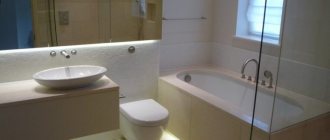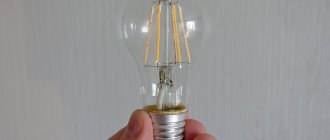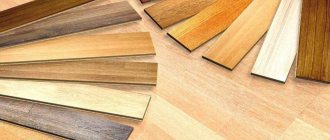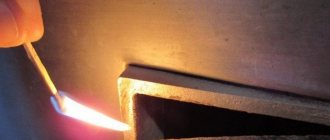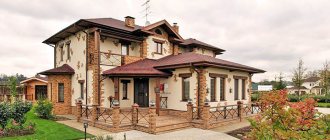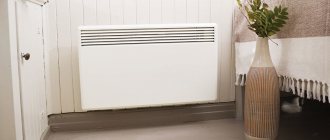Modern lighting technologies have significantly expanded, but at the same time complicated the choice of light bulbs for home use.
If earlier in 90% of apartments there was little besides ordinary incandescent light bulbs from 40 to 100 W, today there are a great variety of varieties and types of lighting lamps. Buying the right type of lamp for a lamp in a store is not such an easy task. What do you want from quality lighting first of all:
- comfort for the eyes
- energy savings
- harmless use
Type of base
Before purchasing a light bulb, it is first important to determine the required type of base. Most household lighting fixtures use two types of threaded base:
- base E-14 or minion
- base E-27
They differ accordingly in diameter. The numbers in the designation indicate its size in millimeters. That is, E-14=14mm, E-27=27mm. There are also adapters for lamps from one lamp to another.
If the lampshades of the chandelier are small, or the lamp has some specific features, then a pin base is used.
It is designated by the letter G and a number that indicates the distance in millimeters between the pins. The most common are:
- G5.3 - which are simply inserted into the luminaire connector
- GU10 - first inserted and then turned a quarter turn
The spotlights use the R7S base. It can be used for both halogen and LED lamps.
The lamp power is selected based on the limitations of the lighting fixture in which it will be installed. Information about the type of base and the power limitation of the lamp used can be seen:
- on the box of the purchased lamp
- on the lampshade already installed
- or on the light bulb itself
G4
These are perhaps the smallest of the volumetric lamps that are used in spotlights. Due to their size and focused light, they are effective in decorative lighting.
Like its older brother G6.35, they were originally designed for low voltage 12V or 24V, but now, in the LED version, they are connected directly to 220V.
Standard size: Bulb diameter 8mm, height from 30mm
Type: Volume lamp, capsule type
Application: In miniature decorative lighting fixtures.
Marking G4: G – pin contacts, distance between contacts 4 mm.
Flask shape
The next thing you need to pay attention to is the shape and size of the flask.
A flask with a threaded base may have:
- pear shape
- ball of different diameters
- or the shape of a candle for narrow chandelier shades and sconces
Pear-shaped ones are designated by the nomenclature - A55, A60; ball ones - with the letter G. The numbers correspond to the diameter. Candles are marked with the Latin letter - C.
A bulb with a pin base has the shape:
- small capsule
- or flat reflector
Installation of a lamp in the ceiling without a mortgage
Another plus of the GX53 H4 is that with some modification they can be mounted even without a mortgage. This may be needed if you don’t want or can’t lower the ceiling low. The whole change takes a few minutes:
- take a standard lamp and remove the spring-loaded ears, which are designed for the mounting
- a plate of a certain length is cut from the suspension and inserted on the reverse side
- after which the metal ears are bent with pliers, thereby fixing the plate
The result is this design with a height of no more than 25mm:
After this, the lamp is inserted into the ceiling and mounted through the holes on the plate using screws.
The only negative is that if the light bulb has a deep reach (for example, with a round radiator grille in the middle), then this option will not work and the lamp simply will not fit into its place.
Lighting standards
Lighting brightness is an individual concept. However, it is generally accepted that for every 10 m2 with a ceiling height of 2.7 m, a minimum illumination equivalent of 100 W is required.
Illumination is measured in lux. What is this unit? In simple words, when 1 lumen illuminates 1 m2 of room area, then this is 1 lux.
The standards differ for different rooms.
Illumination depends on many parameters:
- from distance to light source
- colors of surrounding walls
- reflection of light flux from foreign objects
Illumination can be measured very easily using standard smartphones. All you need to do is download and install a special program. For example – Luxmeter (link)
True, such programs and phone cameras usually lie compared to professional light meters. But for household needs, this is more than enough.
Third step: take into account the characteristics of the room to calculate brightness
When the ceilings are high, and you do not lower the chandelier to a level of 2.5–2.7 m, then to obtain a more accurate result, multiply the final calculations by the coefficient from the table.
| Ceiling height | Additional coefficient |
| 2.5 - 2.7 m | 1 |
| 2.7 - 3 m | 1,2 |
| 3 - 3.5 m | 1,5 |
| 3.5 - 4.5 m | 2 |
Also remember that dark colors and matte textures of surfaces (walls, furniture) absorb light, which is why brighter light bulbs are required.
Large windows and white glossy surfaces will brighten the room.
If you have a large room - for example, 20 m² or more, and you find a chandelier that should illuminate 30 m², this does not mean that it will be enough. Why? Because we will get a bright spot in the center, but the edges of the room will remain dim.
Therefore, our recommendation is to expect that one chandelier illuminates 10–12 m². For other areas, additional sources are needed to help illuminate the room evenly - another chandelier, spotlights or pendant lamps, sconces, floor lamps.
If there is no desire or technical ability to use additional light sources, then we offer a solution that allows you to make the light uniform throughout the room by distributing the sources throughout the ceiling. The options are: spider chandeliers, track systems, spotlights. There is a nuance with spotlights. If they have a diffused flood light (usually LED), then the principle of light uniformity will work. If the spotlight is placed under light bulbs, the light will not be scattered throughout the room, but will illuminate only small areas underneath, which will make the lighting of the room slightly dappled.
Conclusion: if we consider ordinary chandeliers, then take them for 10–12 m², and if larger, add additional light sources.
Incandescent and halogen bulbs
The classic and most inexpensive solution for lighting an apartment is the familiar incandescent lamp, or its halogen version. Depending on the type of base, this is the most affordable purchase. Incandescent and halogen bulbs provide comfortable, warm light without flickering and do not emit any harmful substances.
However, it is not recommended to touch the bulb with your hands for halogen lamps. Therefore, they must come packaged in a separate bag.
When a halogen light is lit, it gets very hot. And if you touch its bulb with greasy hands, residual stress will form on it. As a result of this, the spiral in it will burn out much faster, thereby reducing its service life.
In addition, they are very sensitive to power surges and often burn out because of this. Therefore, they are installed together with soft start devices or connected via dimmers.
Halogen lamps are mostly manufactured to operate from a single-phase network with a voltage of 220-230 Volts. But there are also low-voltage 12-volt ones that require connection via a transformer for the appropriate type of lamp.
A halogen lamp shines brighter than a regular one, by about 30%, but consumes the same power. This is achieved due to the fact that it contains a mixture of inert gases inside.
In addition, during operation, particles of tungsten elements are returned back to the filament. In a conventional lamp, gradual evaporation occurs over time and these particles settle on the bulb. The light bulb dims and works half as hard as a halogen light bulb.
G6.35
Light sources with a G.6.35 socket are analogues of the G9 models presented above. The main difference is that the contacts are made in the form of pins, not loops. Initially, the connection and the cartridges themselves for such a base were considered less reliable. Therefore, they were used in lighting devices with 12-24 V halogen bulbs, through a step-down transformer. Now, in the era of LED technologies, they successfully operate at a voltage of 220V.
Standard size : Bulb diameter 13-18mm, height from 40mm
Type: Volume lamp, capsule type
Application: In spotlights for decorative and accent lighting.
Marking G6.35: G – pin contacts, 6.35 – distance between the axes of the contacts in mm.
Color rendering and luminous flux
The advantage of conventional incandescent lamps is a good color rendering index. What it is? Roughly speaking, this is an indicator of how much light close to solar light is contained in the scattered flux.
For example, when sodium and mercury lamps illuminate the streets at night, it is not entirely clear what color people’s cars and clothes are. Since these sources have a poor color rendering index - around 30 or 40%. If we take an incandescent lamp, then the index is already more than 90%.
Currently, the sale and production of incandescent lamps with a power exceeding 100W is not permitted in retail stores. This is done for reasons of preserving natural resources and saving energy.
Some people still mistakenly choose lamps based on the power labels on the packaging. Remember that this number does not indicate how bright it shines, but only how much electricity it consumes from the network.
The main indicator here is luminous flux, which is measured in lumens. This is what you need to pay attention to when choosing.
Since many of us previously focused on the popular power of 40-60-100W, manufacturers for modern energy-saving lamps always indicate on the packaging or in catalogs that their power corresponds to the power of a simple incandescent light bulb. This is done solely for the convenience of your choice.
Useful tips
Before purchasing, you need to check the integrity and performance of the lamps.
The main recommendation when choosing LED products is to purchase devices in trusted stores from well-known manufacturers. Cheap Chinese light bulbs will not meet the stated characteristics. Light bulbs must be checked for integrity and absence of cracks, as well as for operability. In stores it is possible to install a light bulb for verification. The package must also include a warranty card.
LED chandelier bulbs from an unknown manufacturer may flicker. This negatively affects a person's emotional and physical health. If pulsations are noticeable in an expensive product from a well-known brand, you should go to the store and exchange the device for a new one. Flickering in this case is due to incorrect design of the electrical circuit, and this is considered a manufacturing defect.
Ripple can also be associated with voltage instability in the house. In this case, the phenomenon will be noted in all connected light bulbs that will be installed after the one being tested. The solution to the problem is to install stabilizers or replace the electrical wiring.
There is a problem of lack of load. In this case, it is impossible to control the lamp remotely. The probable cause is a breakdown in the power supply or the choice of the wrong one. It should be replaced with a new one.
Luminescent - energy saving
Fluorescent lamps have a good level of energy savings. Inside them there is a tube from which the flask is made, coated with phosphor powder. This provides a glow 5 times brighter than incandescent lamps at the same power.
Luminescent ones are not very environmentally friendly due to the coating of mercury and phosphor inside. Therefore, they require careful disposal through certain organizations and containers for receiving used light bulbs and batteries.
They are also subject to flicker. This is easy to check; just look at their glow on the display through your smartphone’s camera. It is for this reason that it is not advisable to place such light bulbs in residential areas where you are constantly present.
//youtu.be/bSPenZibRko
Why are halogens interesting?
Halogen is a modern, more progressive variation of the traditional incandescent lamp. Filled with buffer gas vapor. Thanks to this, the operating temperature of the spiral element and the service life of the lighting product are increased.
Halogens have the highest color rendering. This figure is 99-100%, which is an absolute record among light sources.
The devices are presented in various standard configurations and can be built into lamps of the most unusual modifications, into furniture elements and into systems that create spot lighting.
Distinctive features of lamps . Halogens provide the room with bright, rich and dense light throughout its entire service life. Due to their compact size, they can be mounted in very small lamps or built into parts of the interior.
Despite their modest dimensions, they have a uniquely high luminous efficiency and, with equal power, produce much more light than conventional incandescent modules.
Halogen light sources show the highest level of efficiency in small bulbs. Some manufacturers even produce lamps that are already equipped with such a lamp.
The main disadvantage is its vulnerability to mechanical damage and frequent switching on/off. Both of these parameters significantly reduce the life of the lamps and contribute to their rapid failure.
The conditional operating period, according to manufacturers, is 2000-4000 hours, which significantly exceeds the capabilities of incandescent modules. However, halogen bulbs cannot compete with LEDs; against their background they look more attractive only in the context of a low price.
LED
LED lamps and lamps of various shapes and designs are widely used in various spheres of life.
Their advantages:
- resistance to temperature overloads
- negligible effect on voltage drops
- ease of assembly and use
- high reliability under mechanical loads. There is minimal risk that it will break if dropped.
LED lamps heat up very little during operation and therefore have a lightweight plastic body. Thanks to this, they can be used where others cannot be installed. For example, in suspended ceilings.
Energy savings from LEDs are greater than from fluorescent and energy-saving ones. They consume approximately 8-10 times less than incandescent lamps.
If we roughly take the average parameters for power and luminous flux, we can obtain the following data:
These results are approximate and in reality will always differ, since much directly depends on the voltage level, manufacturer brand and many other parameters.
For example, in the USA, in one fire station, an ordinary incandescent light bulb, which is already more than 100 years old, is still burning. There was even a special website created where you can watch her online through a web camera.
Everyone is waiting for it to burn down in order to record this historical moment. You can view it here.
Design solutions
With the advent of light diodes, there are almost endless possibilities in lighting options. Compactness (down to drop-shaped bulbs), high ergonomics, lack of heat transfer, high-quality light, ease of installation, variety of colors - all these properties allow us to consider LEDs as a universal means for realizing design ideas.
Using LEDs, they create luminous floors, create mosaic paintings, highlight individual areas of decorative trim, create local lighting in a room or twinkling stars for the “sky” on the ceiling.
Lamps with horns occupy a special place in design solutions. Thanks to this design, it becomes possible to change the direction of the light. Orienting the horn upward will illuminate the ceiling, while pointing downward will provide diffused light.
Light flow
LED and energy-saving lamps have the ability to produce different colors of light output.
- warm yellow
In this case, it will indicate the value 2700-3500 Kelvin. This is the so-called color temperature. This light is similar to simple incandescent light bulbs. Yellow is the most comfortable for the eyes and cozy for life.
- day white
The lamp indicates 3500-4500 Kelvin. This light is good where correct color rendition is needed - a desktop, applying makeup, artistic work.
- bluish-cold 6400 Kelvin and above
This light would be appropriate in a bathroom or utility room.
In order not to look for incomprehensible numbers and quickly distinguish the amount of luminous flux, manufacturers often put visual color codes on the packaging:
- blue frame – cold light
- yellow – warm
Auxiliary criteria
Ceiling lamp
If you are used to using an intricate lampshade or a carved lampshade, think about what percentage of light distortion they will introduce: both in the color of the glow and in the illumination. One way or another, in this context the lampshade acts as an optical filter. The overall appearance of the room depends on whether it is matte, transparent or colored. Depending on whether the lampshade is single or multi-colored - there is a rainbow on the walls. Finally, the material itself from which it is made sets the overall tone of the interior.
Let's imagine that a light bulb with warm light, level 2700 K in color temperature, is installed in a traditional dark beige or yellow lampshade. In this case, the room will be flooded with a “concentrated” warm glow, causing suffocation rather than pleasant warmth. You especially shouldn’t take such risks in the country house or in the kitchen. Unpleasant sensations are guaranteed for you.
A classic crystal chandelier or simply a transparent lamp harmonizes best with transparent light bulbs. The whole point of such lighting devices is precisely in the play of light, and if you put a matte lamp there, the entire desired effect will be lost.
At the same time, a coated light bulb will fit under the matte lampshade. It will immediately scatter the light and will never blind a person in those places where the lampshade itself should be visible through.
Let's not devote too much time to lamps for other places in the apartment. We believe that the basic principle is clear - the light bulb and the lamp must be combined with each other and not cause either aesthetic or physical discomfort to a person.
Base
It’s a little funny to dwell on this criterion, but often buyers take light bulbs from the shelves after reading all the main characteristics and completely forgetting about the type of base. It is all the more interesting that such consumers know exactly the desired color temperature, the required luminous flux, checked the color rendering index in advance, and also inquired about other products from the same manufacturer as the selected product. And only when checking the light bulb at the checkout it turns out that you should have taken the exact same lamp from a nearby rack, but with a different base.
Therefore, let us remind you: the most common base in our country is E27. The overwhelming majority of light bulbs use it. This standard threaded connection is one of the simplest and most reliable at the same time.
In second place is the so-called “minion”, or E14. The socket for it is often installed in sconces and small lamps. However, sometimes the latter type can be found in ordinary ceiling chandeliers. Here it is used to add additional lightness and elegance to the structure.
Sometimes you come across lamps with very small base diameters (E5, E10, E12) or, conversely, larger ones (E40), which are not used in everyday life and are used exclusively for street lighting. However, their scope of application is extremely limited and the consumer is unlikely to be deceived when choosing a light bulb for them.
From time to time, in European-made chandeliers you can also see sockets for a pin base. It is absolutely impossible to forget that you have a pin rather than a threaded connection, but it is quite possible to be deceived by their diversity, even though the choice of lamps for such sockets is significantly smaller (the main ones are , , GU5.3). Sometimes, if you really like a chandelier, it makes sense to even replace the original socket with a more common one and never have to worry about searching for specific light bulbs in the future.
Price
No one has canceled the price factor, but every prudent owner understands: a quality item cannot be too cheap. It’s better to buy a good light bulb once, and then forget about the need to replace it for five to seven years.
We are mainly talking, of course, about modern LED lamps from well-known global manufacturers. If we talk about the long-term perspective of using different types of light bulbs, this type will show the greatest savings, and the usual and beloved incandescent light bulbs will show the greatest wastefulness in relation to your family budget.


